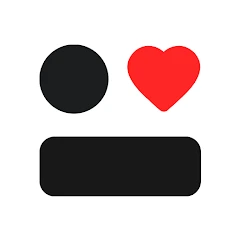How to Get Started with Everything Widgets?
- To get started with Everything Widgets personalization:
- 1. **Access Settings**: Open the Everything Widgets app and navigate to the settings menu.
- 2. **Customize Layout**: Choose the layout that best fits your needs. Decide on the arrangement of widgets based on frequency of use.
- 3. **Select Widgets**: Browse through available widgets and select those that you find most useful. Consider widgets for weather, calendar, news, and to-do lists.
- 4. **Configure Widgets**: Tap on each widget to customize its settings. You can often adjust what information is displayed, the refresh rate, and other options.
- 5. **Organize by Importance**: Place frequently used widgets toward the top or center of your screen for easy access.
- 6. **Themes and Styles**: Explore any available themes or styles to enhance the appearance of your widgets. Adjust colors, fonts, and sizes to match your preferences.
- 7. **Test Functionality**: After customizing, test each widget to ensure they display the desired content and function correctly.
- 8. **Refine Over Time**: As your needs change, revisit the settings to add or remove widgets and tweak configurations.
- 9. **Stay Updated**: Keep the app updated to benefit from new features or enhancements that may improve personalization options.
- Follow these steps to create a personalized experience with Everything Widgets.
10 Pro Tips for Everything Widgets Users
- 1. Utilize user data to tailor widget content based on preferences and behavior patterns, enhancing relevance and engagement.
- 2. Offer customizable layouts that allow users to arrange widgets according to their personal workflow and priorities.
- 3. Implement AI algorithms to suggest personalized widget settings, ensuring users receive the most suitable content.
- 4. Allow users to choose themes or color schemes that resonate with their personal style, creating a more personalized experience.
- 5. Incorporate user feedback mechanisms to continually refine widget personalization based on direct input and satisfaction ratings.
- 6. Enable integration with social media accounts to deliver personalized content from friends or trending topics related to user interests.
- 7. Provide options for users to set reminders or alerts for widget content, ensuring they never miss important updates.
- 8. Allow for bookmark or save features that let users revisit preferred widget content without having to search each time.
- 9. Use location-based services to personalize widget content based on the user's geographical context and preferences.
- 10. Make personalization settings easily accessible, so users can frequently adjust and update their widget preferences on the fly.
The Best Hidden Features in Everything Widgets
- **Custom Widgets**: Tailor widgets to display specific information such as weather, calendar events, or quotes.
- **Dynamic Resizing**: Adjust size and layout to create a more personalized dashboard that fits your style.
- **Color Themes**: Choose from a variety of color schemes to match your device's aesthetics.
- **Interactive Elements**: Enable functionality like tapping to open apps or trigger actions directly from the widget.
- **Smart Stacks**: Use Smart Stacks to rotate through multiple widgets, displaying relevant content based on time of day or usage patterns.
- **Widget Sharing**: Share personalized widget designs with friends or the community for collaborative customization.
- **Access Controls**: Set privacy controls to limit what information is displayed on shared widgets.
- **Schedule-Based Configurations**: Program widgets to change content based on specific times or events, enhancing their relevance.

1.Rate
2.Comment
3.Name
4.Email